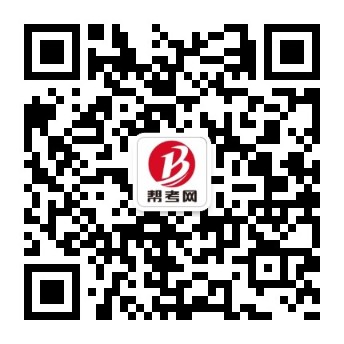
下载亿题库APP
联系电话:400-660-1360

下载亿题库APP
联系电话:400-660-1360

请谨慎保管和记忆你的密码,以免泄露和丢失

请谨慎保管和记忆你的密码,以免泄露和丢失

2021年考研初试备考还有最后的近三个月时间,相信大家也都在紧张的复习当中。在复习时,多做练习题可以让我们更加了解考试内容。下面,帮考网为大家带来考研初试的一些模拟试题,正在备考的小伙伴赶紧练起来吧。
Want to travel faster than light? According to one of the most sacred principles of physics, that\'s impossible. In a vacuum, light travels at 186,282 miles per second, and in a medium like air or water, it goes only a bit slower, which is why when you turn on your bedside lamp, you don\'t have to wait half an hour before the light gets to your pillow. But now it turns out that with the right equipment, scientists can get light to go very, very slowly——as slow as 38 miles per hour. They think they can get it to move even slower, around two hundredths of a mile per hour.
Putting the brakes on light might have applications years down the road, but right now it\'s a fascinating new physical property. To get there, physicists led by Lene Vestergaard Hau of the Rowland Institute for Science in Cambridge, Mass., used a tiny blob of supercooled sodium, activated with a laser at a particular wavelength. A second laser can then be fired through the normally opaque sodium; it passes through, but not much faster than a racehorse can run.
The experiment, reported in last week\'s issue of the journal Nature, took advantage of a peculiar property called electromagnetically induced transparency. Every element has a certain color of light with which it interacts most strongly. Light at that exact wavelength would normally be totally absorbed. For sodium, the stuff these researchers used, it\'s the yellow of common street lights. But a laser at a slightly different wavelength, called a coupling beam, can alter the quantum properties of the atoms so they no longer absorb that wavelength. The quantum seas part, and a laser at the wavelength that should have been absorbed passes through unfettered.
But changing the way a medium absorbs light also transforms the way light moves through it. All transparent substances slow down the light that moves through them——that\'s why light seems to bend, or refract, when it passes from air to water. Electromagnetically induced transparency, says Stanford physicist Steve Harris, spectacularly alters sodium\'s refractive properties. Light takes seven microseconds to cross a sample only eight thousandths of an inch long; in the vacuum of space, light would go more than a mile in the same time.
The sodium slows light the most if it\'s in a special state, a quantum curiosity called a Bose-Einstein condensate. It\'s created when atoms are cooled until they stop moving almost entirely. The atoms merge; the quantum wave functions that define them combine into one. ``You need a very pure gas, very cold, and the atoms in it can\'t be colliding with each other,\'\' says Eric Cornell, a physicist at the University of Colorado at Boulder and one of the makers of the first Bose-Einstein condensate. Chilled to just billionths of a degree above absolute zero, individual sodium atoms become a single, dense glob, atoms vibrating in lockstep.
Superslow light will remain a laboratory curiosity for some time to come. If they can slow photons down enough——Hau is shooting for about a centimeter a second——scientists could make images of the light as it passes by. In theory, it might be brought virtually to a stop, although it\'s hard to know what you\'d do then. Now, if only they could get it to go faster——that would be something.
注(1):本文选自Newsweek; 03/01/99, p61;
注(2):本文习题命题模仿对象2004年真题Text 1;
1. What do scientists expect to achieve in the study of light?
[A]They want to get rid of absorption of the light.
[B]They want to travel faster than light.
[C]They want to get the superslow light.
[D]They want to get the light to move even faster.
2. Which of the following is the advantage of electromagnetically induced transparency?
[A]It causes no absorption of light.
[B]It makes the color of light much brighter.
[C]It stops the passing of light.
[D]It changes the nature of light.
3. The expression “putting the brakes on light”(Line 1, Paragraph 2) most probably means
_______.
[A]activating light
[B]confining light
[C]reserving light
[D]slowing down light
4. Why does light seem to bend when crossing from air to water?
[A]Light is absorbed when entering the water.
[B]Transparent substances slow down the light.
[C]Light changes its way when entering the water.
[D]The water reflects light when light travels across it.
5. Which of the following is true according to the text?
[A]Superslow light has been applied widely.
[B]Light can even be brought to a stop.
[C]The research on superslow light still has a long way to go.
[D]It is impossible to travel faster than light.
答案:CADBC
以上就是帮考网为大家带来的全部内容,希望能给大家一些帮助。帮考网提醒:以上内容仅为参考,在做试题练习时,小伙伴们还是要以考研大纲为准,有针对性的去做题哦。最后,帮考网预祝参加2021年考研初试的小伙伴都能取得优异的成绩。
 22
22以前年度的普通研究生入学考试成绩还能查询吗?:以前年度的普通研究生入学考试成绩还能查询吗?以前的考研成绩能查,成绩查询可以登录中国研究生招生信息网,根据自己报考研究生考试的报名号登陆,即可查询以前的考研成绩。
 35
35普通研究生入学考试现场确认必须要本人到吗?:普通研究生入学考试现场确认必须要本人到吗?现场确认时,报考者要带着本人身份证、学位证、学历证等证件的原件和复印件,原件由现场老师验查,复印件直接提交给现场老师。如果现场确认时审核出材料不实,考生将被取消录取资格,确认无误后本人要签字,这也是不能找人代替的原因之一。
 18
18普通研究生入学考试时必须携带准考证吗?:普通研究生入学考试时必须携带准考证吗?是的,考生需持网上打印的当次考试准考证和二代身份证参加考试,二证缺一不得参加考试。
 00:41
00:412020-06-06
 00:44
00:442020-06-06
 00:28
00:282020-06-06
 00:27
00:272020-06-06
 00:33
00:332020-06-06

微信扫码关注公众号
获取更多考试热门资料